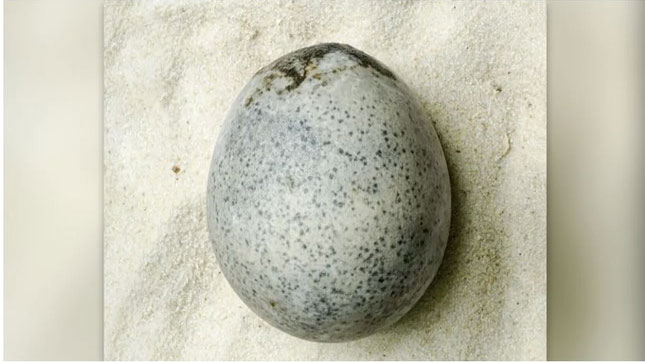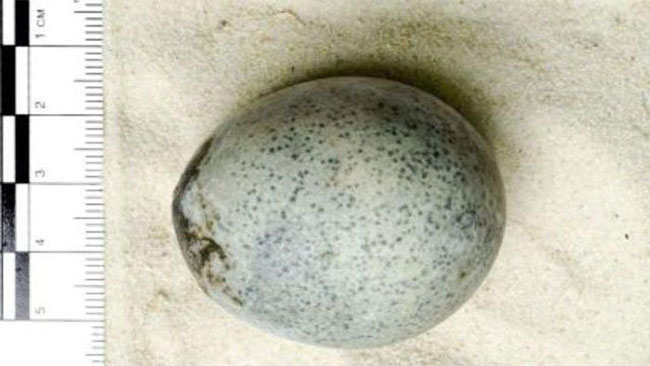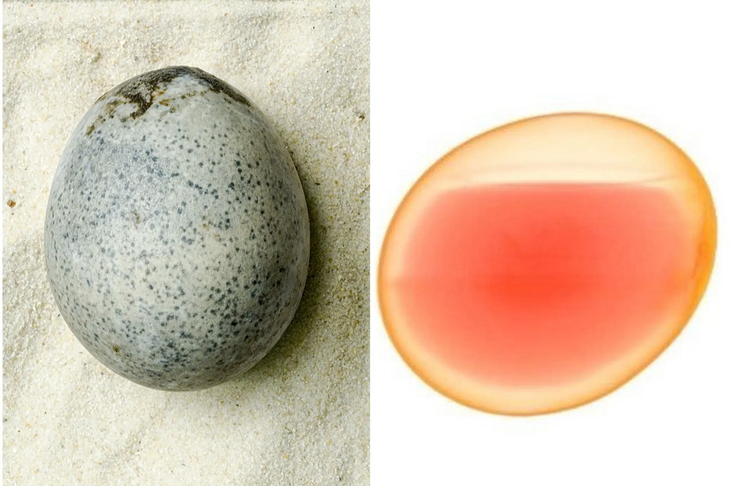A three-dimensional scan of a 1,700-year-old egg discovered in the English town of Aylesbury shows that the eggs strangely still have egg yolks and egg whites inside.
This is believed to be the only chicken egg found still intact inside after many centuries.

 Scans of a 1,700-year-old chicken egg show it still contains liquid and air bubbles. (Photo: Oxford Archeology)
Scans of a 1,700-year-old chicken egg show it still contains liquid and air bubbles. (Photo: Oxford Archeology)
“We were really surprised when we saw what was inside, because we would have thought it had leaked out,” said Edward Biddulph, senior project manager for the private company.
The egg was one of four found several years ago during an archaeological dig at a Roman site in the central England town of Aylesbury, about 30 kilometers east of Oxford. Three of the fragile eggs broke when they were unearthed, emitting a strong stench, but the fourth remained intact.
Now the egg has been scanned at the University of Kent using micro-computed tomography (micro-CT), where multiple X-ray scans are digitally edited to form a virtual 3D model. Biddulph said: “It produced an amazing image showing that the egg was intact – which was incredible – still retaining liquid inside, probably from the yolk, albumen, as well as air bubbles “.

Roman eggs
The eggs were found in a flooded pit at the Aylesbury site, which is being excavated by Oxford Archeology ahead of a housing development. Archaeologists have found evidence of existence there since the Neolithic period, and the pit dates back to the third century AD, when Britain was part of the Roman Empire.
According to a statement from Oxford Archaeology, the pit was originally used for grain and beer brewing, but it was later filled with water and became a place where passersby could throw coins and items Others make offerings for good luck to the gods.
Organic objects usually rot when exposed to oxygen, but here many are preserved thanks to the wetland. In addition to the eggs, the hole also contained a wooden basket, leather shoes, jars and wooden tools.
Although Roman eggshells have been found before – often in tombs where eggs were believed to be offerings – this appears to be the first time an intact Roman egg has been found in the UK.
According to The History Blog, the only intact surviving egg from the Roman period was found in the hand of a dead infant buried near the Vatican, but contained no liquid, leading archaeologists to say, it symbolizes rebirth after the baby’s early death.
The Oxford Archeology statement notes that the Romans often attributed symbolic meaning to eggs; they are associated with the gods Mithras and Mercury and carry meanings of fertility and rebirth.
The intact egg from Aylesbury was taken to the Natural History Museum in London, where experts were advised on how to preserve it without breaking it.
Senior curator of ornithology Douglas Russell told BBC News that the museum has a collection of mummified bird eggs excavated from Egyptian tombs, but this was a bird egg that had been unintentionally preserved for a long time. the best he had ever seen.





